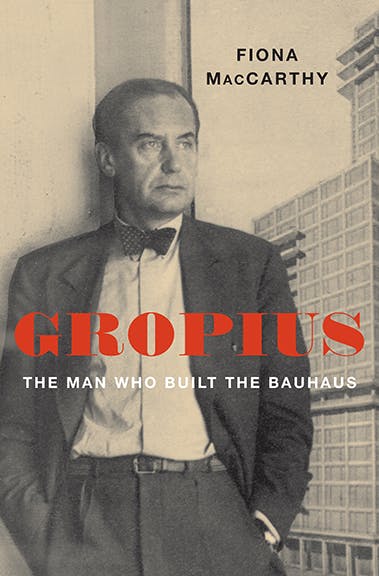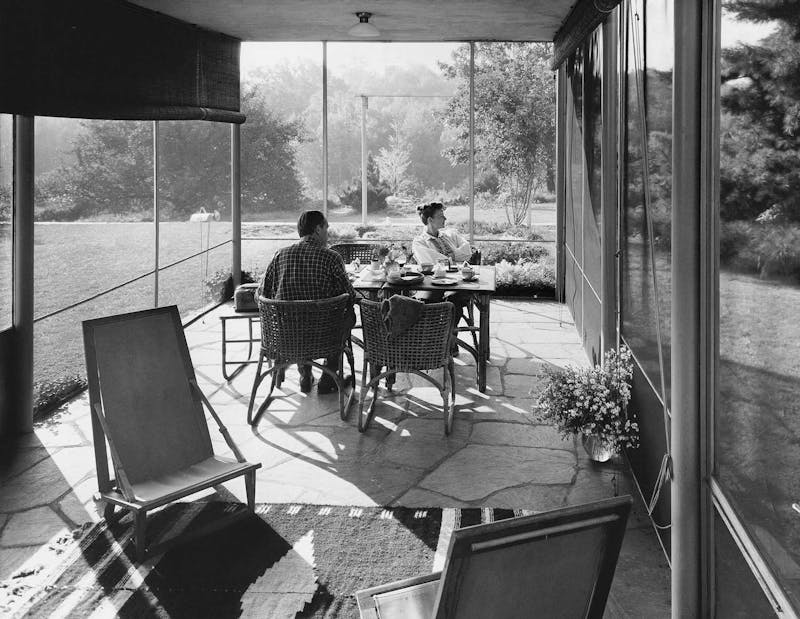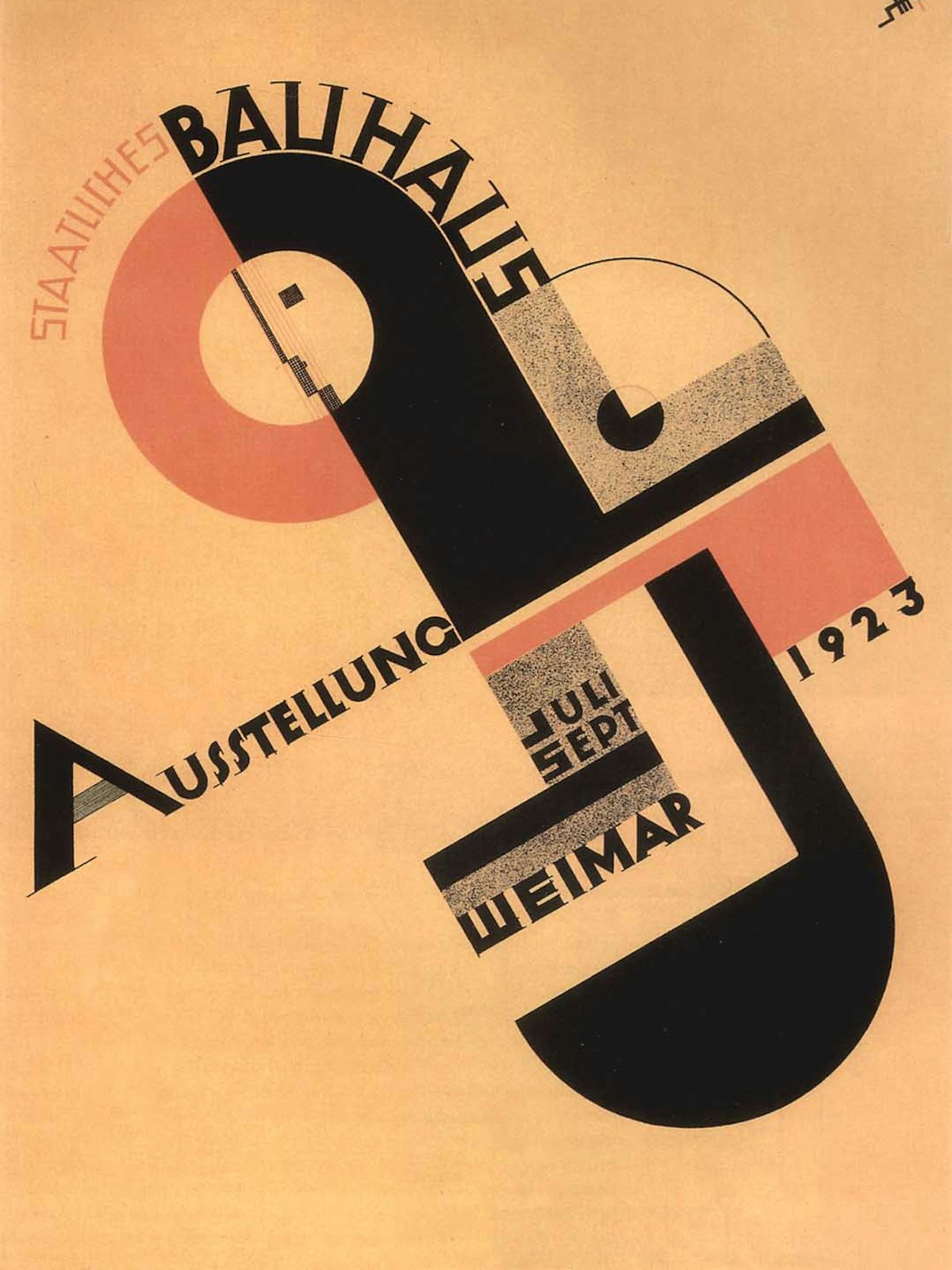Architecture is a notoriously egotistical profession. One person, usually an older man, often takes credit for a lengthy and multifaceted process of planning and construction. It does not help that many famous architects hardly eschew the mantle of auteur genius. Instead, they embrace their star status with gusto, downplaying the army of engineers, designers, and junior architects who support them. Some of the biggest names in modern architectural history—Frank Lloyd Wright, Oscar Niemeyer, and Philip Johnson—lived well into, or past, their nineties, sketching ideas on paper napkins for their studios to complete. The abominable treatment of women in the profession, and the lack of class and racial diversity, do little to undermine the cliché of the tyrannical master-architect belting out orders to subordinates.

The heyday of modern architecture in mid-century Europe and the United States, when angular and spare structures of glass and steel became popular, was a time when famous architects wielded their powers and egos particularly recklessly. Modernism’s practitioners were not just taken with their own self-image as individual artistic creators—a concept that had been less pronounced in the nineteenth century—but they also fervently sought to remake the built environment by demolishing the architecture of the past. New cities created ex nihilo and populated with megalith structures—such as the Brazilian capital Brasília—showcased modern architecture as a way of life, with modern architects as rational gods capable of reprogramming space and society.
The new book Gropius: The Man Who Built the Bauhaus, by the seasoned design historian Fiona MacCarthy, shows a very different way of working. The Bauhaus school, which laid much of the groundwork for architectural modernism, was, she argues, fundamentally collaborative. Founded 100 years ago by Walter Gropius, the Bauhaus brought together competing strains of early–twentieth-century art and architecture, acknowledging the new importance of mass production while also celebrating craftsmanship as process. The aesthetic was defined by simplicity: the use of primary colors, elemental shapes resembling children’s building blocks, and charmingly unadorned and chunky lowercase typography. In his own buildings, Gropius was a major exponent of light-filled and spare modernist architecture, though he nurtured a plurality of styles in other artists’ work. Unlike many modernist masters, he was far more interested in community and education than in mega-projects branded with his own name.
This is not the man portrayed in Tom Wolfe’s 1981 book From Bauhaus to Our House, which pilloried Gropius as a bore, concerned only with the elitist project of modern architecture. MacCarthy transforms him from a dull institutionalist—head of the Bauhaus and, later, prominent professor at the Harvard Graduate School of Design—into a stylistic rebel who lived and loved in an exuberant community of artist outcasts that would be scattered across the world after Weimar Germany became the Third Reich. Whereas critics of the Bauhaus have seen it as the harbinger of giant faceless office towers and superhighways slicing through cities, MacCarthy presents the school as a fount of idealism: both an artistic collective, surging with creative energy, and a political project briefly filled with the angst and élan of a lost generation soon to be crushed by Hitler.
Most of all, MacCarthy shows that Gropius’s true legacy was the talent he nurtured in others—I.M. Pei, Philip Johnson, Paul Klee, Marcel Breuer, and Wassily Kandinsky, to name but a few. Behind a controlled exterior that sometimes bordered on sangfroid, Gropius was a passionate romantic. Rather than developing a single authoritative style of his own, he made his major work a school that allowed countless artistic visions to flourish amid the zany costume balls, paint-splattered workspaces, and madcap frenzy of student life. If, as has been said, the Bauhaus was the ultimate art school, Gropius was the definitive dean.

Gropius was born into a wealthy family of architects in Berlin in 1883. His great-uncle was well known for designing the Decorative Arts Museum in Berlin in a neo-Renaissance style, with mini-porticos on the windows and prominent mosaics on the exterior walls. The family was bourgeois and not immune to the draw of upward mobility—this may have been why young Walter trained briefly in the distinguished Hussars regiment of the Kaiser’s army. Disillusioned with the rigid aristocratic norms of the elite cavalry, he left to pursue a degree in architecture. The master teacher was quite a bad student, and left the Königliche Technische Hochschule in Berlin without a degree. Yet, armed with family connections, some degree of architectural knowledge, and a lot of gumption, Gropius began his career under the noted architect Peter Behrens, who also employed another young protégé: Mies van der Rohe (who would become the third and final leader of the Bauhaus school). Although Gropius learned much from Behrens, he eventually left after bungling measurements on an important commission.
The term “paper architect” is often employed to describe those within the profession who theorize without actually building: Their grand plans remain in blueprint form as they expound the importance of their stylistic innovations from the lectern of college classrooms. Gropius’s father was an architect who did not build (he eventually became a public servant instead), and there is some evidence that this jolted Gropius into early productivity. In 1910, he set up his own firm in Berlin and secured several contracts, the most important of which was a small factory in Lower Saxony. Completed in 1914, the Fagus Factory is one of the earliest and most striking examples of modern architecture, replacing ornate detail with startlingly geometric lines. Its largely glass exterior hangs off the building like a curtain, while a central load-bearing frame provides structural support: a technique far ahead of its time but later ubiquitous in the glassy modernist towers of the 1950s and 1960s. When occupying American troops came across the building over 30 years later after World War II, they were astounded to learn that the building predated World War I.
Not long after the factory’s completion, Gropius was recommissioned into the cavalry. His war was not an easy one: He was nearly killed several times. He even survived the collapse of a house that crushed almost everyone else around him and left him buried in rubble for days. He suffered intense psychological and physical trauma. One of his only comforts during these years was his clandestine relationship with Alma Mahler, a grand dame of Vienna and the widow of the composer Gustav Mahler. Their relationship would eventually result in marriage and a child, but it was marked by turbulence, which, as MacCarthy makes clear, was largely due to Mahler’s chronic infidelity. She was both a horrific snob, who made conquests of noted artists, and an encouraging muse who pushed her romantic partners to greatness (if only by making them scared they’d join her extensive trash heap of ex-lovers).
Gropius was no exception. After the war, when the provisional government of Thuringia asked him to direct a small arts school in provincial Weimar, Mahler had mixed feelings. She disliked the out-of-the-way location but approved of him becoming a director of an institute of higher learning at the age of 35. What she did not comprehend was Gropius’s intense dedication to creating a community for teaching and learning that would attract leading avant-garde modernists from across Europe.
The Bauhaus school started with a modest sum in 1919, in a set of scruffy buildings in Weimar that had been damaged by the war. Students brought a furious energy to their studies, in large part because they had suffered the trenches of France and Belgium and emerged with their lives. MacCarthy observes that, from the beginning:
Art was not treated as sacrosanct . . . . It was there to be enjoyed just as part of normal life. This was the driving force behind the original concept of the Bauhaus as envisioned by Gropius. Responding to the horrifying carnage of the First World War in which technological advances had been harnessed to the weaponry of destruction, the Bauhaus—literally the House of Building, with its underlying sense of spiritual reconstruction—was Gropius’s attempt at a reversal of this process.
Many of the students were influenced by the Wandervögel movement following the war, when young men wandered the countryside looking for meaning. They found it in their new art school teachers, men such as the constructivist László Moholy-Nagy, the painter Paul Klee, the already famous Russian expatriate Wassily Kandinsky, Oskar Schlemmer (who also ran the school’s theater workshop), the architect Marcel Breuer (who created furniture like the Cesca chair), and the geometric abstract painter Josef Albers. Recounting the Bauhaus roster of teachers from the early 1920s is like taking a stroll through the permanent collection at MoMA. Gropius wanted to establish the ultimate art school, bringing together a range of mediums and putting them all in service of rebuilding European society after the Great War. This was to be a “truly democratic art,” MacCarthy writes, “allied to architecture, art for the people in which everyone could share.”
In this period, Anni Albers created undulating geometric tapestries, Paul Klee painted his brightly colored semi-cubist work Red Balloon, and Gropius drew inspiration from Frank Lloyd Wright to construct the Sommerfeld House, which overflowed with the carvings, furniture, and stained glass of other Bauhäuslers. To begin with, the Bauhaus was defined more by its transformation of the decorative arts and interior design rather than by exteriors. Over Gropius’s life, his focus shifted from the redesign of the objects of daily life to a more thorough reworking of the built environment. His later architectural work noticeably drew on the innovations of the Bauhaus period. He was, for instance, influenced by Oskar Schlemmer, who used choreography extensively in his sculptures. Meanwhile, the bisected shapes of Moholy-Nagy’s paintings also gave Gropius new ways to think about ordering space to convey a sense of motion.
The Bauhaus was a political community as much as it was an artistic one. Before coming to the Bauhaus, Gropius was associated with Arbeitsrat für Kunst (Work Council for Art), a radical socialist collective that emphasized the need for affordable housing, and many of his students and faculty shared the left politics that were flourishing in the exhilarating early days of the Weimar Republic. Gropius was known for keeping his political opinions to himself and occasionally putting a damper on the radicalism of students and staff at Bauhaus, but he also saw the school as a revolutionary project: While he called it “this great communal work of art, this cathedral of the future,” it was no surprise that in 1923 Oskar Schlemmer referred to it as a “cathedral of socialism” in a hastily retracted exhibition guide.
Many of the students saw art-making as an almost monastic endeavor and became followers of the Swiss Professor Johannes Itten—a self-styled Zoroastrian mystic with a shaved head and fondness for wearing ascetic tunics. Itten supervised his students in maintaining vegetarian diets, fasting, and purging with laxatives. MacCarthy observes that some of Itten’s acolytes took to imitating his style by wearing the shirt-blouses left behind by Russian prisoners of war but dyed in garish new colors. They would also shave their heads like Itten’s and, as MacCarthy notes, “The resulting bald scalp gave scope for imaginative decoration, such as painting the smooth skull in black squares for a party.” This put off the conservative residents of Weimar, who were already having trouble transitioning away from the authority and traditionalism of the Kaiser. At the same time, it positioned the school on the 1920s cultural map despite its distance from Berlin.
As Gropius dove into the project of Bauhaus, his relationship with Alma started to fall apart. They had married in 1915, but by 1920 they were separated. Gropius took many lovers, some casually, some less so: One was a student, another was married, most were involved in the arts. He was idealistic about his newfound sexual freedom, writing in a long and turgid letter to the poet Maria Benemann: “I know no anchor, no chains…. You wanted me and I gave myself to you and it was beautiful and pure.” After he married Ise Frank in 1923, he continued to pursue an unconventional lifestyle. Ise had an affair with Gropius’s friend and colleague Herbert Bayer, a Bauhaus graphic designer, and, although displeased at first, Gropius came to accept it. He maintained a close friendship with Bayer, vacationed with him and Ise, and even received cheery postcards co-signed by them from their extramarital ski outings. For Gropius, as MacCarthy documents, this kind of openness was vital to the Bauhaus spirit of experimentation. It was necessary to subordinate individual jealousy to the needs of a broader, chosen community.
Eventually, the upright citizens of Weimar had enough of the art students swimming nude in the Saale River and of their professors making socialist pronouncements while asking for public funding. In 1925, the school was ousted. It reopened shortly thereafter in Dessau—another small city, a bit closer to Berlin—with the support of the city’s government. This gave Gropius the opportunity to design the now-famous white-and-gray building that would house the school. This may be the last exemplary building he completed without substantial contributions from others. He also created accommodation for the senior Bauhaus faculty but never quite succeeded in fulfilling the city’s desire to construct low-cost housing for average citizens—an omen of modern architecture’s lofty talk of redesigning society for all, while tending to prioritize construction contracts for wealthy private backers.
The Bauhaus would only exist in Dessau for a few years. It weathered first the departure of Gropius, then the rise of fascism, which cut off funding. In 1933, during the leadership of Mies van der Rohe, the school closed. The students and faculty were scattered. Some were exiled for their progressive values, and others, often those with non-Aryan heritage, were sent to concentration camps. Gropius continued to seek work in Nazi Germany, even registering with the new government and submitting designs for public buildings. He had no sympathy for Nazism, but wanted to remain close to his daughter in Vienna and to help his friends, hoping the storm would blow over. This compromised position was brief: In 1935, he was forced to seek work in London and settled there.
The Bauhaus embodied everything Nazis detested about the sexual, cultural, and intellectual freedom of the Weimar Period. In 1937, the Nazis organized an exhibition of “degenerate art,” which vilified modernists, including Bauhaus artists Paul Klee and Wassily Kandinsky. The next year, the Museum of Modern Art in New York responded with a Bauhaus retrospective, which established the school’s reputation in the United States. It provided a bridge between the eclectic genres held together under the umbrella of Bauhaus and the more monolithic modernism of the 1950s and 1960s. Gropius also took advantage of the exhibit as a first opportunity to solidify his reputation as the undisputed leader of the Bauhaus and its all-important dean, a small act of historical revisionism that communicated his esteem for education over construction but also his own non-negligible ego.
Gropius and Ise made their way to the United States, where he took up the rather grander teaching role of professor of architecture at the Harvard School of Design. He restarted his own practice, first with Marcel Breuer and later with a collective of young former students known as TAC (The Architects Collaborative), but he was more focused on teaching a new generation. Like his students from Weimar and Dessau, these graduates would become leaders in their fields, and, working at the peak of postwar modernist excitement, they would build government complexes, museums, and epochal skyscrapers. Among them were I.M. Pei (the creator of the Louvre’s glass pyramid), Philip Johnson (one of modernism’s foremost masters and creator of the Midtown Manhattan “Lipstick” building), and Paul Rudolph (an exponent of brutalist concrete buildings).
Throughout his years at Harvard, Gropius saw architecture as a project larger than any one building, no matter how important, and he encouraged his students to incorporate the more holistic discipline of urban planning into their work. At a time of intense dogmatism, he did not proclaim that there was a “right” modernist aesthetic. He was more driven by the broader goal of modern architecture: to internationalize the profession and bring order and rationality to cities. Since World War I, Gropius had believed that the clean forms of modernism could wipe away parochial nationalism, to establish a forward-looking universal aesthetic. By the early 1950s, it seemed the rest of the world finally agreed with him.
Walter Gropius’s largest project is not well regarded: The Pan Am Building (now the MetLife Building) hangs over New York’s Grand Central Station with the sterile heaviness that many people see as typical of modern architecture. Lost is the fun of Bauhaus, its social mission, and the air of unfettered creativity. The by-product is aesthetic blandness, easily repackaged and shifted around global cities by architecture firms that specialize in corporate headquarters. Along the way, Gropius’s successors abandoned the Bauhaus spirit for the ability to work on projects at a monumental scale, and substituted the ideal of collectivity for rampant self-branding.
Gropius’s legacy cannot be judged by his biggest structure but rather by the huge influence he had over a range of artistic mediums. As the Bauhaus turns 100 years old, it stands in contrast to an architecture defined by glass-and-steel towers, emanating little more than an aesthetic of power. Bauhaus is celebrated for the people who flocked to it and created art with verve and playfulness. It has become a reminder of the importance of exciting educational spaces, even those that are unabashedly utopian and outlandish, in which the end goal is social change.
